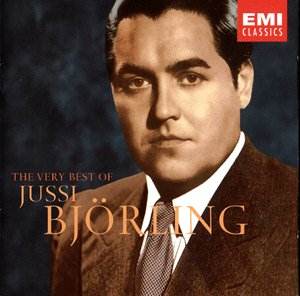




CD 1.
Giuseppe VERDI (1813-1901)
Rigoletto, ‘Questa o quella’
Rigoletto, La donna e mobile’
Il Trovatore, ‘Ah si, ben mio’
Il Trovatore, ‘Di quella pira’
Un ballo in Maschera, ‘Di tu se fedele’,.’Forse la soglia… Ma se m’é’.
Aida, ‘Se quell guerrier io fossi!…Celeste Aida’.
Requiem, ‘Ingemisco’.
Gioachino ROSSINI (1792-1868)
Stabat Mater, ‘Cujus animan’.
Gaetano DONIZETTI (1797-1868)
L’Elisir d’amore, ‘Una furtive lagrima’.
Amilcare PONCHIELLI (1834-1886)
La Gioconda, ‘Cielo e mar!’
Umberto GIORDANO (1867-1948)
Fedora, ‘Amor ti vieta’.
Andrea Chenier, ‘ Come un bel di maggio’.
Francesco CILEA (1866-1950)
L’arlesiana, ‘E la solita storia’.
Giacomo PUCCINI (1858-1924)
Manon Lescaut, ‘Donna’ non vidi mai’ ‘Ah, Manon, mi tradisce’.
La boheme, ‘Che gelida manina’La fanciulla del West, ‘Ch’ella mi creda’.
La boheme, ‘In un coupe?..O Mimi, tu piu non torni’
Tosca, ‘Dammi I colori…Rencondita armonia’.
Tosca, ‘E lucevan le stelle’
Turandot, ‘Nessun dorma’.
Pietro MASCAGNI (1863-1945)
Cavalleria rusticana, ‘Mamma! Quell vino e generoso’
Ruggero LEONCAVALLO (1858-1919)
Pagliacci, ‘Vesti la giubba’.
Pagliacci, ‘No! Pagliaccio non son’
CD 2
Giacomo MEYERBEER (1791-1864)
L’Africaine, ‘Mi batte il cor..O paradiso’.
Georges Charles GOUNOD (1818-1893)
Faust, ‘Salut! Demeure chaste et pure’.
Romeo et Juliette, ‘Ange adorable’
Romeo et Juliette, ‘Ah! Lève-toi, soleil’.
Jules MASSENET (1842-1912)
Manon, ‘Instant charmant..En ferment les yeux’
Manon, ‘ Je suis seul!…Ah, fuyez, douce image’.
Georges BIZET (1838-1875)
Carmen, ‘La fleur que tu m’avais jéter’.
Les Pecheurs de perles, ‘Je crois entendre encore’.
Ludwig Van BEETHOVEN (1770-1827)
‘Adelaide’
Richard STRAUSS (1864-1949)
‘Morgen’ and ‘Cecile’
Sergei RACHMANINOV (1873-1943)
‘In the Silence of Night’ and ‘Lilacs’
Francesco Paolo TOSTI (1846-1916)
‘Ideale’
Eduardo Di CAPUA (1865-1917)
‘O sole mio’
Ruggero LEONCAVALLO (1858-1919)
‘Mattinata’.
Guy d’HARDELOT (1858-1926)
‘Because’
Rudolf FRIML (1879-1972)
‘Only a Rose’.
Henry Ernest GEEHL (1881-1961)
‘For You Alone’
Jaques OFFENBACH (1819-1875)
‘Au mont de trois dessées’ (sung in Swedish).
Carl MILLOCKER (1842-1899)
‘Ich hab’ kein Geld’ (sung in Swedish).
Adolphe ADAM (1803-1856)
‘Cantique de Noel’. (sung in Swedish).
Various orchestras and conductors. Recorded between 1936 and 1956.
Bargain Price.